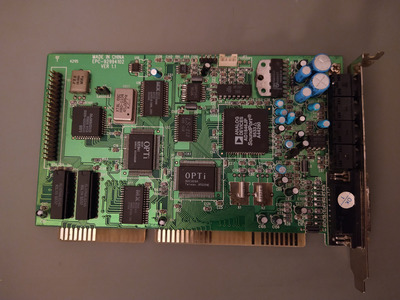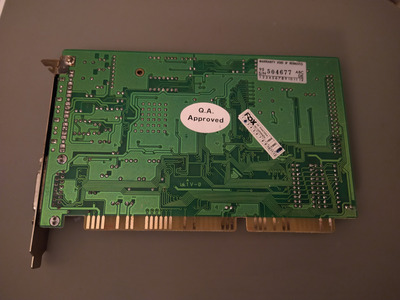First post, by Gabriel-LG
Hello,
Recently I fixed up a Philips P2230 with a 12.5MHz 286.
I would love to add a sound card to this system, but I do not have the budget to purchase anything period correct.
Electromyne has some ISA cards for under 30 euros, but I find it hard to pick a reasonable card.
I am aiming for the following:
- Good Soundblaster compatibility
- Reasonable FM (does not have to Yamaha, but should come close)
- Gameport for adding a joystick
- Should be 286 compatible (if the driver contains 386 instructions, it simply won't run)
- 286 is slow, so no software synthesis or whatever...
- Wavetable header would be a nice to have
So far I have found the following:
- ALS007/ALS100 cards should be good, as they have good SB compatibility and external FM
- Avoid Avance Logic ALS100+ and ALS120 (FM synthesis is horrible)
- Avoid Analog Devices AD1816/AD1815 (FM synthesis is horrible)
- ESS audiodrive 1868F and 1688F should be OK
- Crystal CX4235 has horrible FM
- Crystal CX4236B and CX4237 have OK FM, good SB compatibility.
- Opti 82C931 and 82c933 have poor FM
- Opti 82c929(A) is combined with OPL3 (clone) should work fine (something appears to be off with my machine though)
- Aztek AZT2320 great FM but poor soundblaster compatibility/quality
- Vibra16 cards have poor FM (CQM
is also software based, right?is a different modulation technique) - CMI8330(C)/SoundPro 1896V+ good compatibility, good FM.
Did I miss anything, or make any mistakes in the list above?
All of these cards/chips are from the late '90s, are there any chances some of these won't run due to i386 instructions in drivers?
What about plug and play. Obviously my 286 does not support that.
I found one card based from Diamond Technologies with a DT-0196H + LS-262 (rebranded ALS007 + OPL3 clone). Could that be any good ?
I have heard horror stories about Diamond Technologies with regards to hardware/design quality (not to be confused with Diamond Mutimedia btw!).

